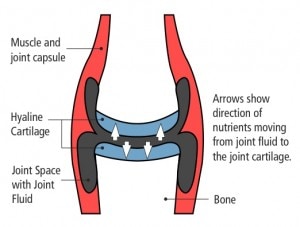Concerned about Cartilage Loss: Take your Chondroitin!
I’m always asked by our stem cell patients, what supplements do we recommend to prevent cartilage loss or build cartilage? Well a new, well designed study out this week may have answered that question. This study had patients take either Condoitin Sulfate or a placebo and then tracked cartilage volume measured with a special MRI. Chondroitin is a “GAG” (glycosaminoglycan) which is an important structural component of cartilage, so it’s been recommended to arthritis patients for years. While many patients and physicians swear by it, the medical research studies on Chondroitin have been all over the map, with some showing good efficacy for arthritis patients and others not showing any differences from placebo. Of note, the National Institutes of Health conducted a study and found no effects for Chondroitin for lessening arthritis symptoms when compared to a sugar pill. However, the study design was a bit “Pharma-centric”. For example, the NIH study compared Glucosamine and Chondroitin (GCS) to the blockbuster drug Celebrex. The problem with this study design is that pitting a nutritional supplement against Celebrex is like comparing a ball peen hammer to a sledgehammer for nailing abilities. Both will work, with the ball peen hammer (GCS) taking a bit longer to seat the nail and the Sledgehammer (Celebrex) working more dramatically, but with significant collateral damage. This is exactly what the NIH observed; Celebrex produced big gun effects for lowering pain in all arthritis categories, while Glucosamine plus Chondoitin worked only for patients with moderate to severe pain. Since GCS had no effect on all arthritis patients (the mild, moderate, and severe groups), the study authors concluded that GCS didn’t work. While Celebrex worked well in all groups, other studies have shown convincingly that it also increases your sudden death and heart attack risks to a dangerous level.
While it would seem the NIH study was conclusive, it failed to answer an important question. For those patients with mild pain who take supplements for prevention, does Chondroitin do anything? The answer seems to be “yes” based on the new MRI research. The researchers in the new study took 69 arthritis patients and randomized them at multiple centers to receive either a placebo pill or Condroitin Sulfate 800 mg once a day for 6 months. They then took the additional step of giving both groups Chondoitin for an additional 6 months. MRI cartilage volume was measured before and after (to see if the supplement had any impact on preserving cartilage). The Chondroitin group showed significantly less cartilage volume loss at 6 months on MRI when compared to the placebo. This difference in MRI detected cartilage loss persisted at the 12 month mark as well. The Chondroitin group also had less swelling in the bone marrow (an indication that the cartilage was functioning better due to the Chondroitin). The full text of the article is available here. This study may fit well with the study I blogged on earlier showing that a reduction in the SIRT-1 gene activation reduced GAG production, making cartilage unstable. Both of these studies taken together may provide insights into how cartilage turnover works and interacts with diet. For example, you can either put more building blocks in the hopper (take cartilage components like Chondoitin) or stimulate the genes that make new GAG’s (like Chondroitin and Glucosamine) by taking Resveratrol. Either way, the cartilage health and durability is improved. The upshot? Since MRI studies are objective with endpoints that are easy to measure and pain studies are subjective with end points that are hard to measure, I would say this new study blows the socks off the old NIH study in that it’s more in line with why patients take supplements-to keep from getting arthritis or to reduce it’s worsening. So until another study comes out (this one could be bigger), I would say take your 800 mg Chondroitin everyday!

NOTE: This blog post provides general information to help the reader better understand regenerative medicine, musculoskeletal health, and related subjects. All content provided in this blog, website, or any linked materials, including text, graphics, images, patient profiles, outcomes, and information, are not intended and should not be considered or used as a substitute for medical advice, diagnosis, or treatment. Please always consult with a professional and certified healthcare provider to discuss if a treatment is right for you.

